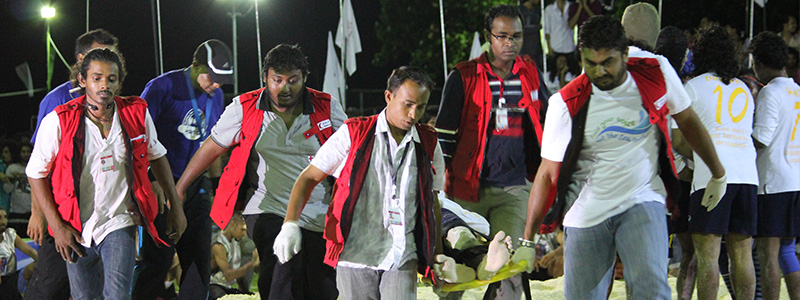The International Red Cross and Red Crescent Movement

The International Red Cross and Red Crescent Movement is dedicated to preventing and alleviating human suffering in warfare and in emergencies such as epidemics, floods and earthquakes.
It is not a single organization. It is composed of the International Committee of the Red Cross (ICRC), the International Federation of Red Cross and Red Crescent Societies and the 186 individual National Societies. Each has its own legal identity and role, but they are all united by seven Fundamental Principles.
These principles are humanity, impartiality, neutrality, independence, voluntary service, unity and universality. Each component of the Movement is committed to respect and uphold them.
The International Committee of the Red Cross (ICRC)

The ICRC’s exclusively humanitarian mission is to protect the lives and dignity of victims of armed conflict and other situations of violence and to provide them with assistance. It directs and coordinates the Movement’s international relief activities during armed conflicts. Established in 1863, it is at the origin of the Movement.
The International Federation of Red Cross and Red Crescent Societies (IFRC)

The Federation inspires, facilitates and promotes all humanitarian activities carried out by its member National Societies on behalf of the most vulnerable people. It directs and coordinates its members’ actions to assist the victims of natural and technological disasters, refugees and those affected by health emergencies. It was founded in 1919.
National Societies:
National Societies act as auxiliaries to their national authorities in the humanitarian field. They provide a range of services including disaster relief, and health and social programmes. In wartime they may assist the civilian population and support the medical services of the armed forces.
To participate in the Movement a National Society must first be recognized by the ICRC and then admitted to the International Federation. There are ten conditions for recognition listed in the Statutes of the Movement. They include such requirements as autonomous status recognized under national legislation, the use of a recognized emblem and adherence to the Fundamental Principles. There can only be one society in each country and it must be constituted on the territory of an independent State.
This last condition was waived by a resolution of the 30th International Conference in 2007 in the case of the Palestine Red Crescent Society.
Every two years, the National Societies and their Federation meet in a General Assembly. Immediately afterwards, the ICRC joins them in what is known as the Council of Delegates. This body discusses strategic issues of importance to the Movement.
Every four years, the whole Movement meets with all States that are party to the Geneva Conventions in what is known as the International Conference of the Red Cross and Red Crescent. This body can also be called at other times to deal with issues faced by the Movement.
A nine-member Standing Commission organizes the conferences. Five of its members are elected during the International Conference. The four ex-officio members, two each from the ICRC and the International Federation, currently include the presidents of both institutions.
The regular meeting of the Movement and governments in international conferences is unique in humanitarian affairs. It reflects the history and origins of the ICRC and Red Cross and Red Crescent societies, and the central importance of international humanitarian law, in particular the Geneva Conventions.
In operations, the Movement has adopted the Seville Agreement to clarify the role and responsibilities of its components in various situations. The lead role concept aims to maximize the Movement’s impact by strengthening coordination and eliminating overlap and duplication of effort.
Since the Movement works with non-governmental organizations in the field, it has also developed a code of conduct to ensure high standards in providing assistance to victims of wars and disasters..